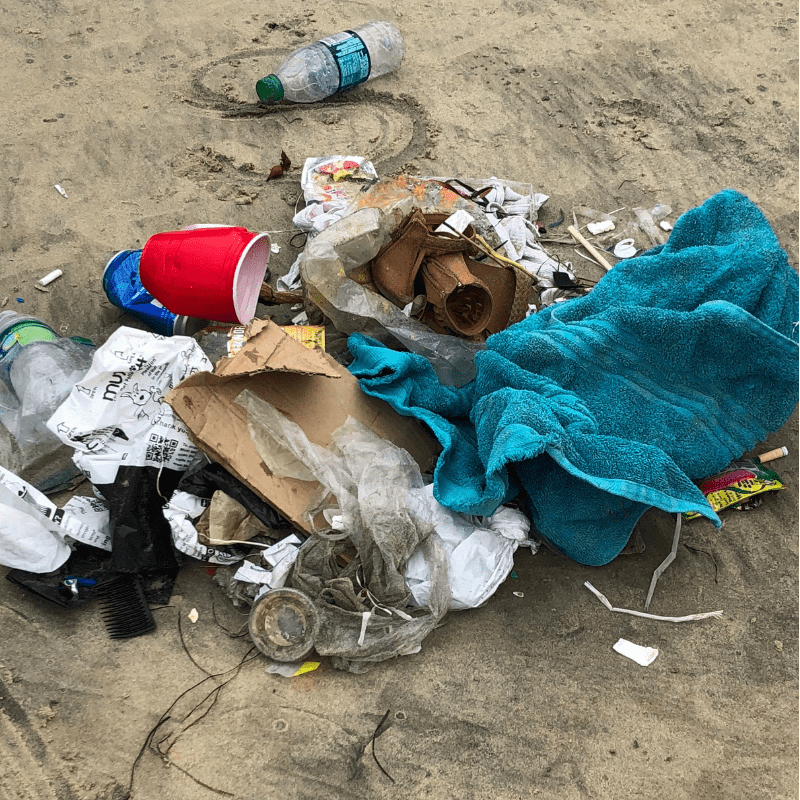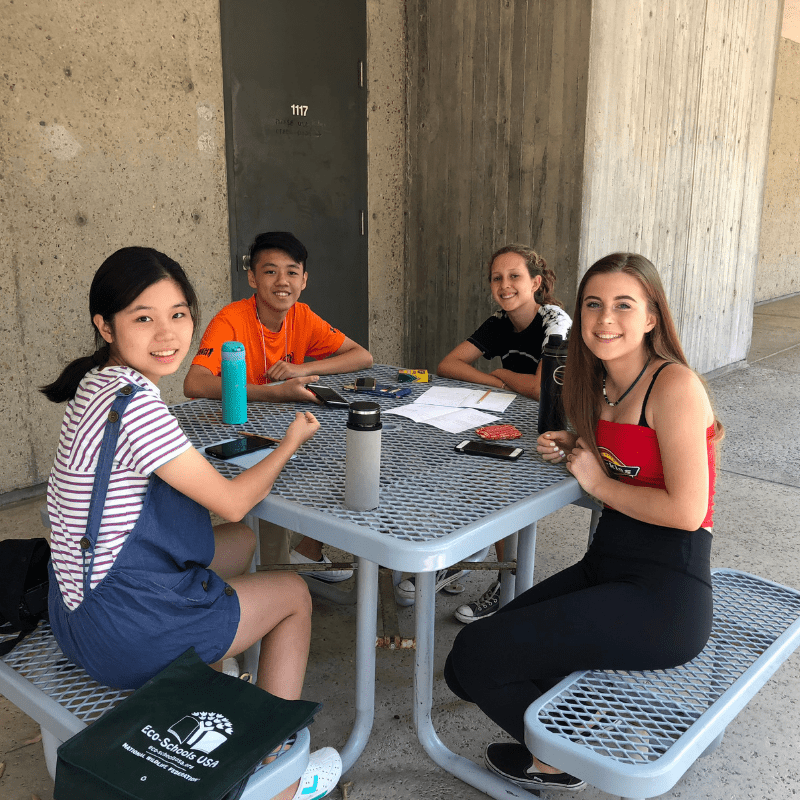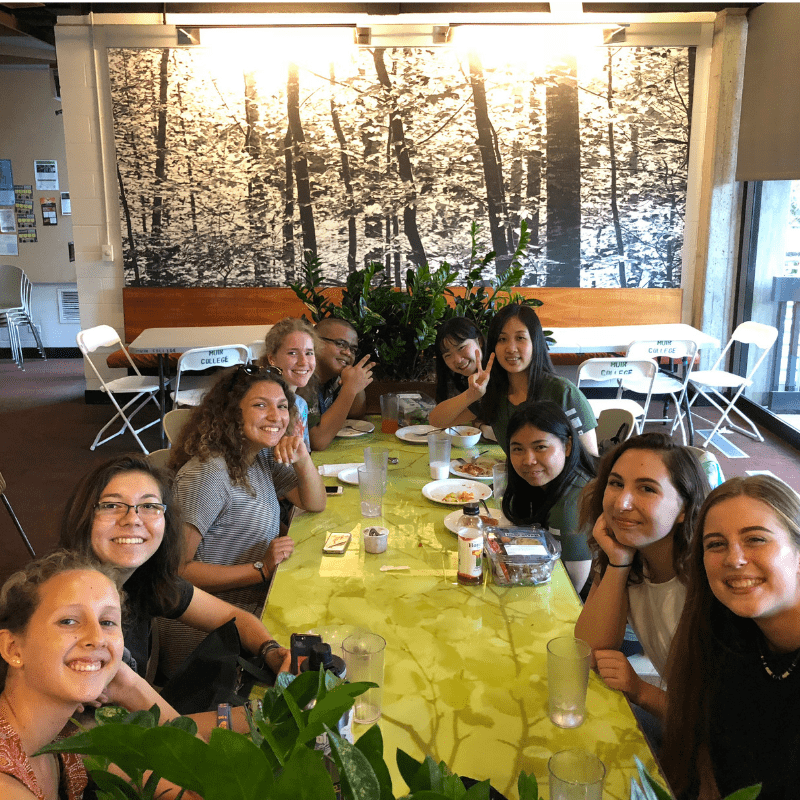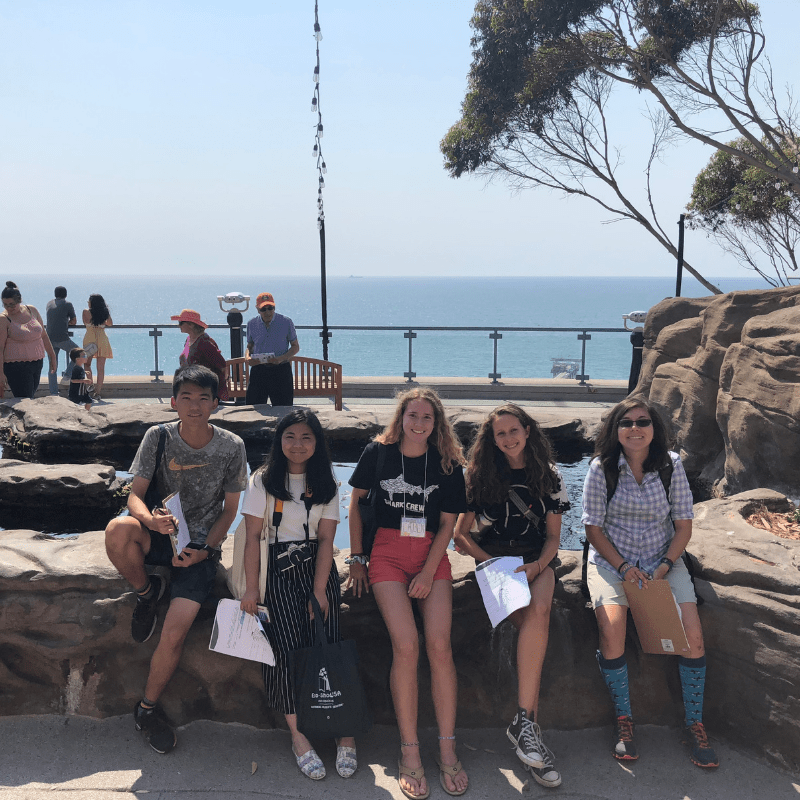We have much more to do and your continued support is needed now more than ever.
San Diego Students Making Waves: Join the #OceanChallenge

In August 2018, Cloe Moreno and Eliana Meza-Ehlert, students at High Tech High, an Eco-School in San Diego, CA, participated in the Student Conservation Leadership Summit at the University of California, San Diego (UCSD) campus. The summit, hosted by the National Wildlife Federation and the Ministry of Education Taiwan, served as a forum for high school students to fully develop ideas around the theme of “Watersheds, Oceans, and Wetlands – Water Connects Us All.”
Participants in the Student Conservation Leadership Summit at University of California, San Diego. Photo Credit: Jennifer Hammond.
Cloe and Eliana check the typical boxes for two Southern California teens: they enjoy being outside on their share of ocean-lined land that lends itself to the total 95,471 miles of US shoreline, are running buddies, and rising juniors. But most uniquely, they share a desire to protect and conserve the ocean that surrounds their San Diego community.
This extends to the global waters shared by their new Taiwanese peer connections from the Student Conservation Leadership Summit and beyond. Cloe and Eliana discuss how their experience at the Student Conservation Leadership Summit influenced their ocean conservation efforts and the importance of encouraging other students to care too.
Why do you care about ocean conservation?
Eliana: Regardless of where I am in the world, my hometown of San Diego, or abroad in a landlocked country, the ocean plays a huge role in the climate and weather of that location. Ocean currents regulate climate all around the world, not only that, but many sea animals in specific regions need water to be a certain temperature in order to thrive. If one species is threatened, the entire ecosystem is threatened.
Cloe: The ocean is a lot more than just water. It contains photosynthetic organisms that produce oxygen that are then brought into our atmosphere and also takes in carbon dioxide, a major element we produce. This life-sustaining ecosystem deserves more than just our willingness to exist with it, we need to be actively protecting and advocating for its health.
After participating in the Student Conservation Leadership Summit, what changed about the way you think about the ocean?
Eliana: Before attending the Student Conservation Leadership Summit, I thought was already aware of many of the issues that affect our oceans: plastic pollution, warming waters, chemical pollution, and climate change were just a few of the problems that our oceans were facing. However, throughout the Summit, I began to realize that I was just scratching the surface of what was a long list of issues. I was pushed to consider how ocean currents, PH levels, watersheds, and microplastics interacted with each other to influence our oceans.
What are you doing to impact the ocean environment you care about?
Cloe: Since art is something I find very fulfilling, I have created posters to spread the message of how important it is to take care of our ocean in a colorful way. These posters try to demonstrate what the issues are and how to help.
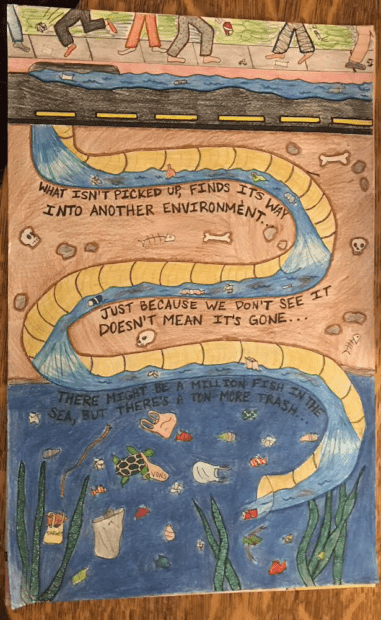
How do you think it’s possible for your generation and generations before and after you to create healthy oceans?
Eliana: One of the biggest things that any person can do regardless of if they are Baby Boomers, Millennials, or Generation X, is to learn about the waterways and watersheds in their communities. No matter if you live near an ocean or not, everyone needs to drink water. In order to drink water, we first need a source. Much of the water from our waterways also ends up in the ocean, so helping to conserve and care for our own local waterways and watersheds will help heal our oceans.
What do you think are some of the biggest threats to the ocean and how are you working with your peers to raise awareness about these threats?
Cloe: I think one of the biggest threats to our oceans is plastic pollution. As plastic sits in the water it breaks down releasing chemicals and more tiny pieces of plastic. Our humanities and biology classes have projects focused on researching and writing about environmental issues that we then turn into an action like volunteering or clean ups.
So, what can we do as students to fight against the negative threats the ocean?
Participate in the 2019 Ocean Challenge by creating ocean-inspired art. Enter here, then tag @studentsrebuild and @ecoschoolsusa with the hashtag #OceanChallenge, so we can repost your art! For every artwork you send in, the Bezos Family Foundation will donate $2 (up to $500K) toward youth-focused ocean conservation and restoration efforts in coastal communities.
Saving the ocean starts with you! Take the #OceanChallenge. Create recycled sea creatures to support our partners, @nature_org, @oceancollectiv & @global_nomads work in restoring marine health and supporting coastal communities. Each artwork = $2 donation! https://t.co/0s7j2F9RuA pic.twitter.com/odlmQ5OuQG
— Students Rebuild (@studentsrebuild) September 25, 2018


